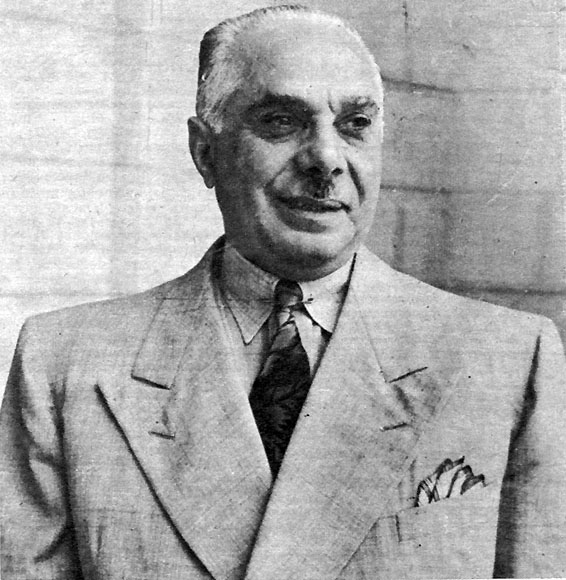 |
| Rafael Trujillo |
One of the longest-serving Latin American dictators, Rafael Trujillo ran the Dominican Republic from 1930 until his assassination in 1961. For some of that period he was president of the country, and for the rest he was the effective dictator of the Caribbean nation, ruling through hand-picked presidential candidates.
Rafael Leónidas Trujillo y Molina was born on October 24, 1891, the son of poor parents from San Cristóbal in the Dominican Republic. In 1918 he joined the country's national guard, which was trained by the U.S. Marines.
The United States, having invaded two years earlier, remained in occupation of the country until 1924. Rising to the rank of major in 1924, Trujillo became chief of staff in 1928, ousting President Horacio Vásquez in a coup d'état in February 1930.
  |
In the elections that followed the coup, Trujillo was the major candidate. Trujillo took office on August 16, 1930, establishing a ruthless dictatorial regime that utilized the severe repression of political opponents. After a hurricane destroyed the capital, Santo Domingo, in September 1930, Trujillo set about rebuilding it—it was then renamed Ciudad Trujillo (Trujillo City).
In the 1930s, when many European Jews were desperate to leave Germany and other countries, Trujillo encouraged Jewish migration to the Dominican Republic. At the end of the Spanish civil war he also allowed many Republicans to migrate to the Dominican Republic.
Although many people hailed this humanitarianism of the regime, others saw it as an attempt to increase the "white" population of the country at the expense of the blacks. Certainly the black Haitian sugarcane workers were treated harshly.
In 1937 Dominican troops were involved in massacring between 15,000 and 20,000 of them, following Trujillo's claims that Haiti—which occupied the other half of the island of Hispaniola— was supporting Dominican Republic exiles.
When Trujillo stepped down as president on August 16, 1938, a friend, Hacinto Peynado, became president, and the ex-president remained commander in chief of the army. In February 1940, Manuel de Jesús Troncoso took office, and on May 18, 1942, Trujillo returned as president.
On December 8, 1941, the Dominican Republic, supporting the United States, declared war on Germany. Trujillo's strident anticommunism made him a useful ally for the United States after the war, and U.S. vice president Richard Nixon visited the country in 1955.
Although Trujillo was a brutal dictator and a corrupt administrator, the country prospered under his rule. The Dominican Republic's small middle class essentially arose during his rule. He tried to rule with a veneer of democracy, although his Partido Dominicano allowed very little room for opposition in the political arena. In elections, the Partido Dominicano was usually the only party to put forward candidates.
On May 16, 1952, Trujillo stepped down as president, and his younger brother, Hector Bienvenido Trujillo y Molina, succeeded him. Rafael Trujillo, however, continued to wield the real power in the Dominican Republic. Pressure on Trujillo over human rights abuses escalated.
On March 12, 1956, Dr. Jesús de Galíndez, a Basque who had moved to the Dominican Republic, where he had worked for the government, was kidnapped in New York and disappeared. He had written a book called The Age of Trujillo, which was about to be published.
It was believed that Galíndez had been taken back to the Dominican Republic and executed there. Trujillo was blamed for this, and the Organization of American States imposed economic sanctions.
On May 30, 1961, Rafael Trujillo was assassinated when machine gun fire raked his car on a highway in the southwestern outskirts of the capital. He was hit five times and died in the street after having managed to get out of the car.
Rumors point to U.S. interests being involved in the assassination to get rid of an international pariah whose repression might have led to a communist revolution as in nearby Cuba. The plot was organized by Antonio de la Maza, brother of pilot Octavio de la Maza, who was murdered in 1957.
Many of the family were killed in the wake of Trujillo's assassination, including General J. T. Díaz, who was said to have masterminded it. Trujillo's body was taken to France, where he was buried in the Père Lachaise Cemetery in Paris.